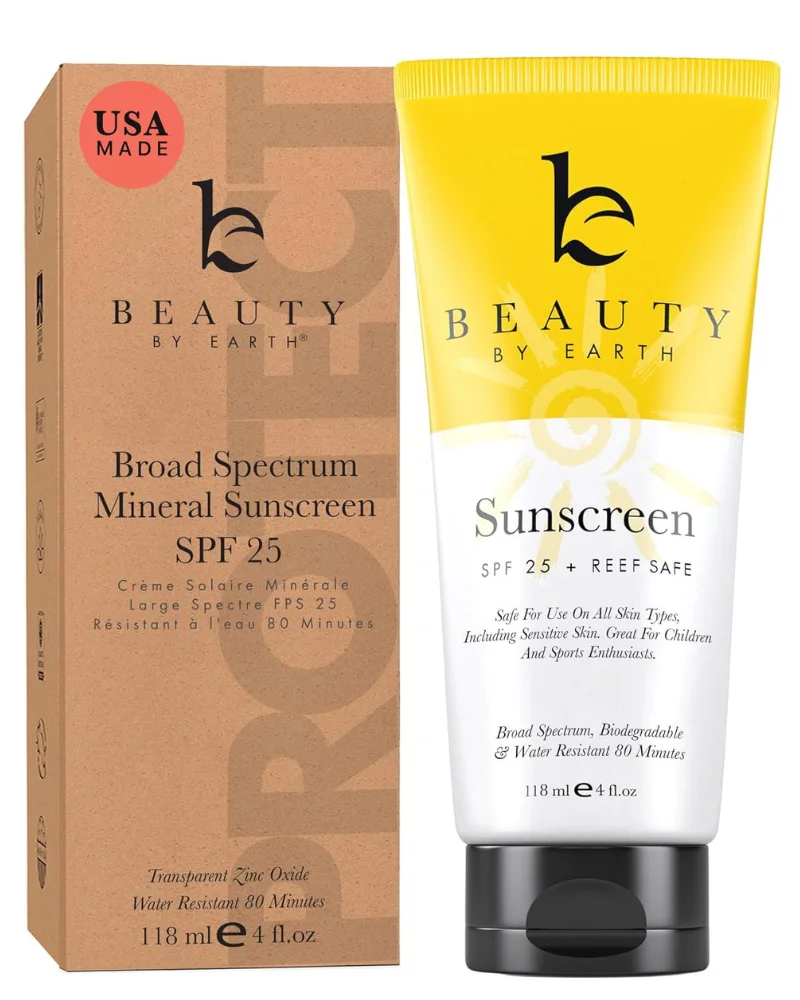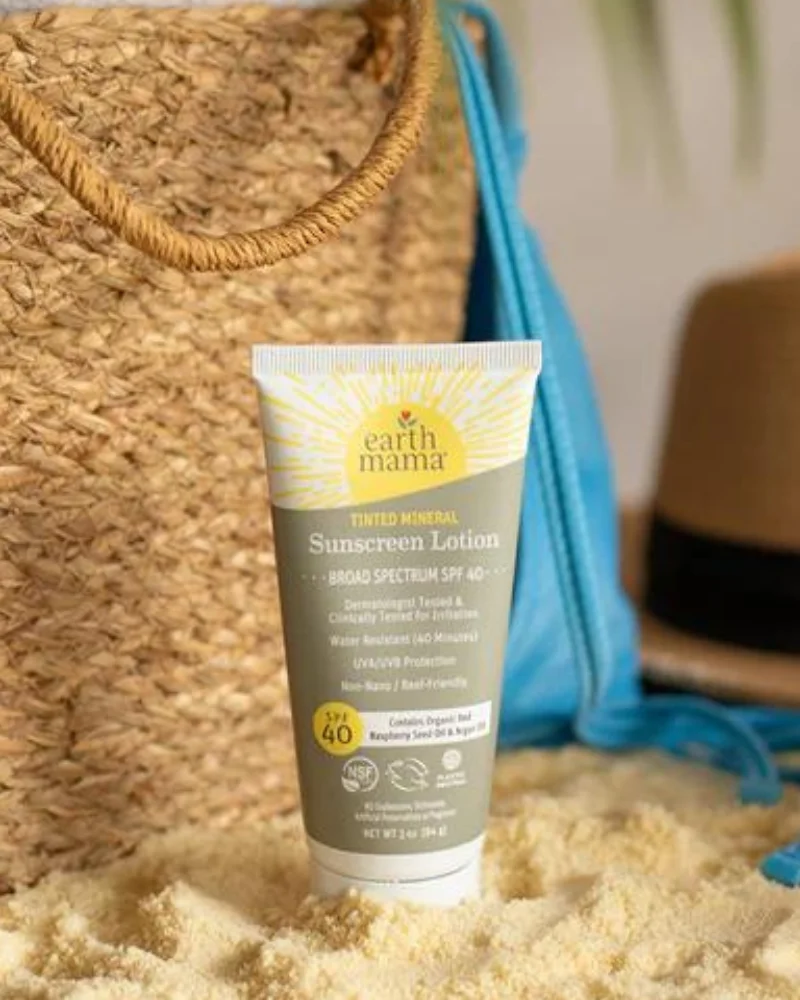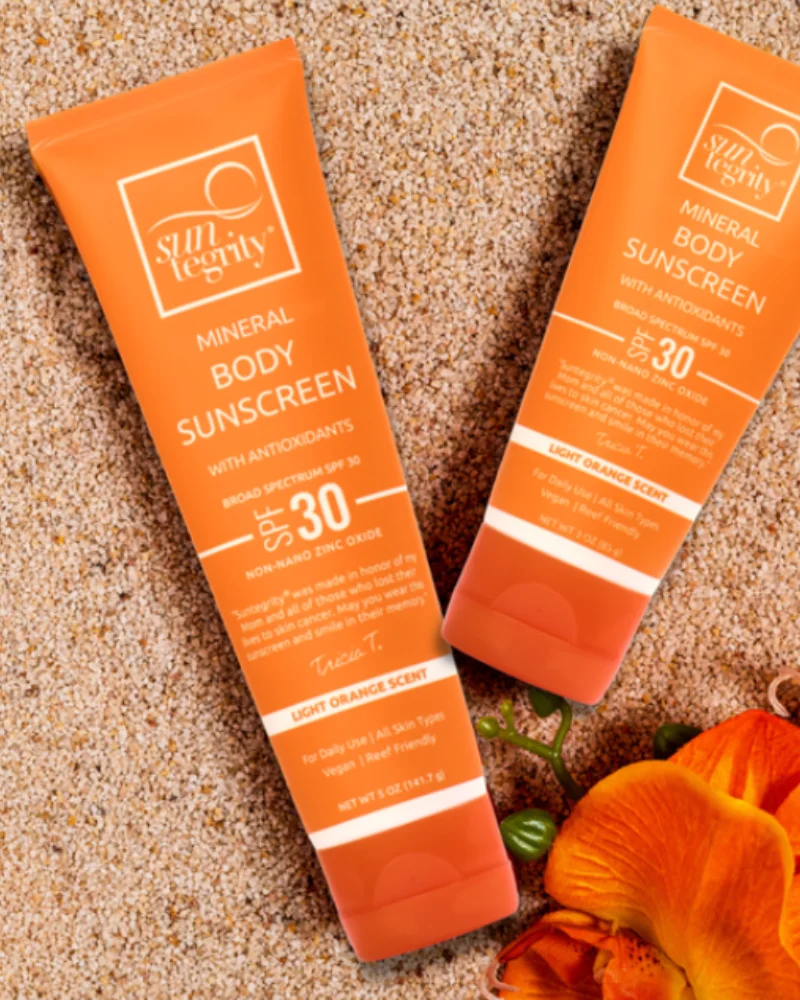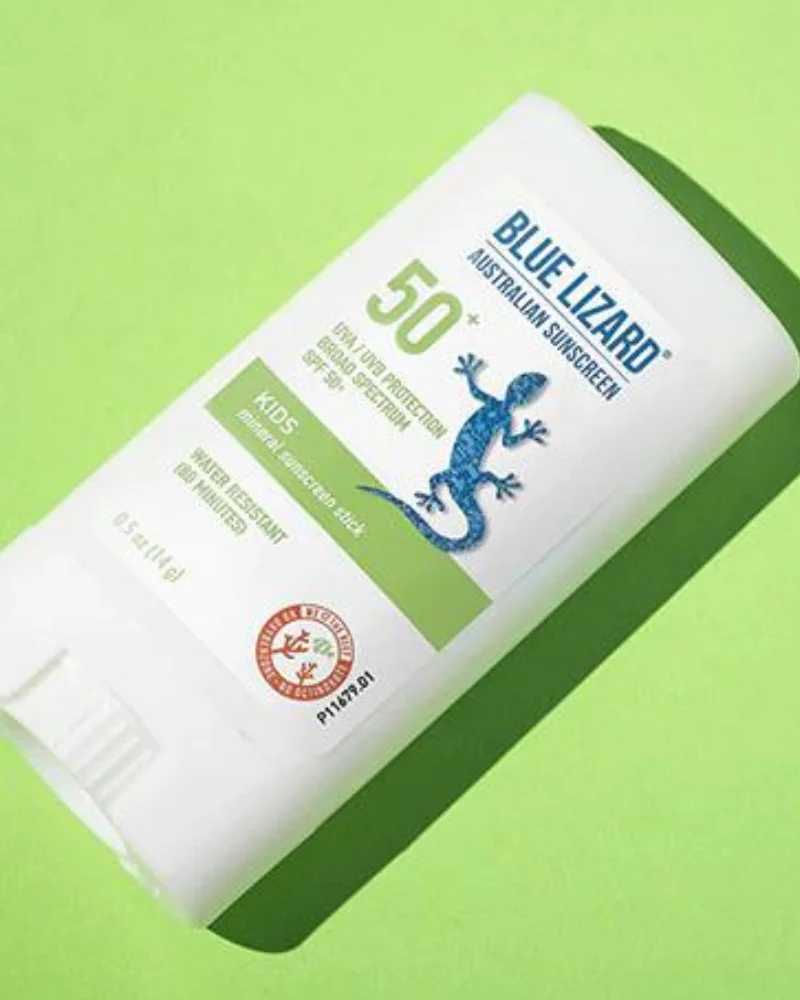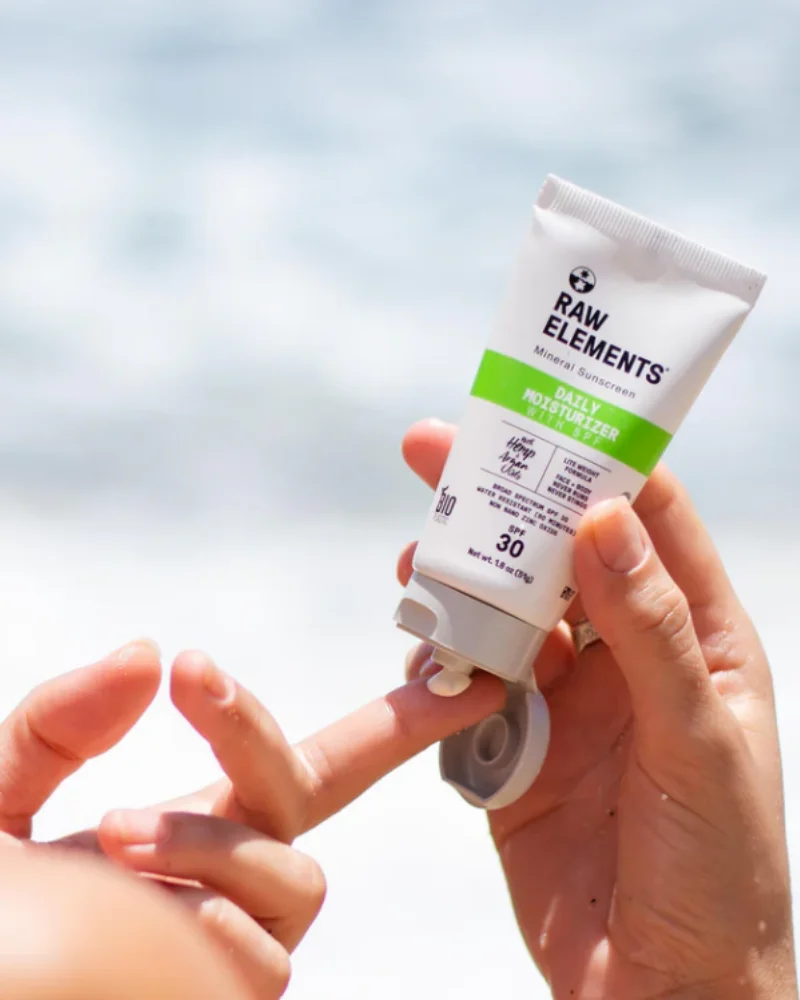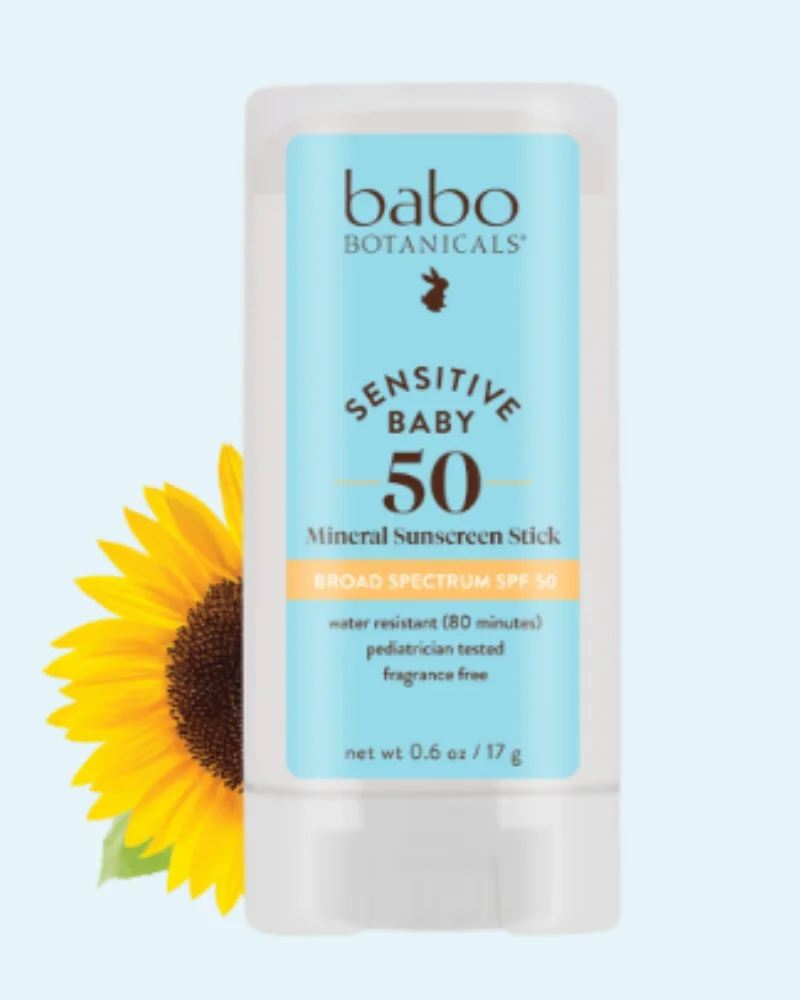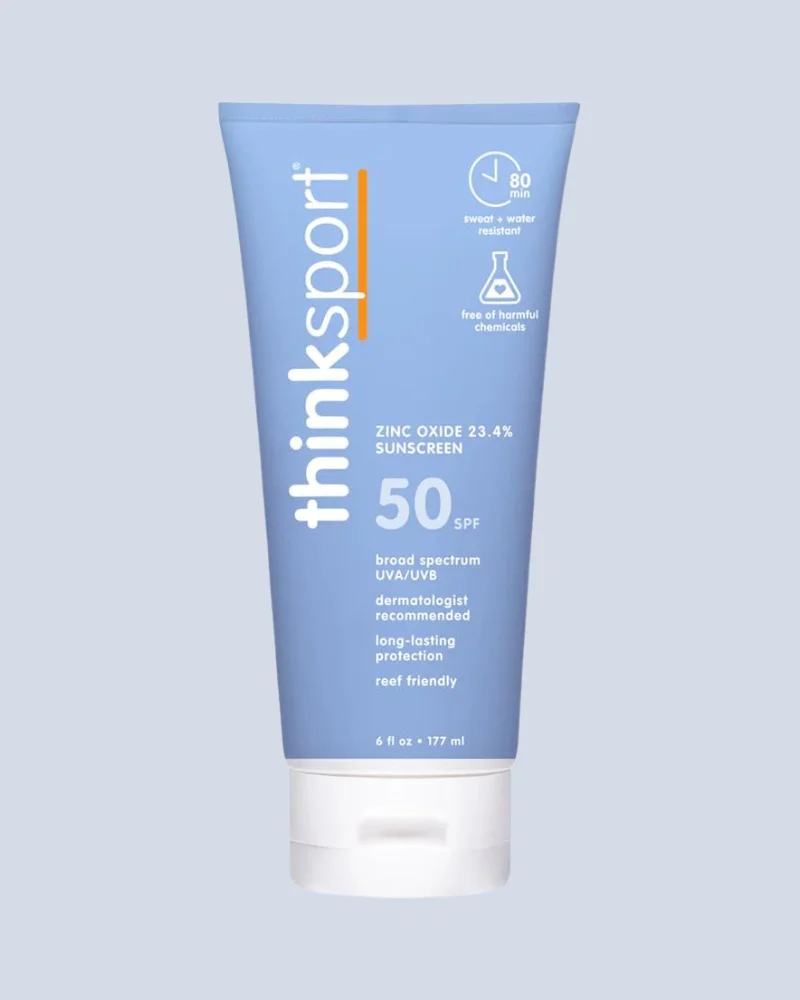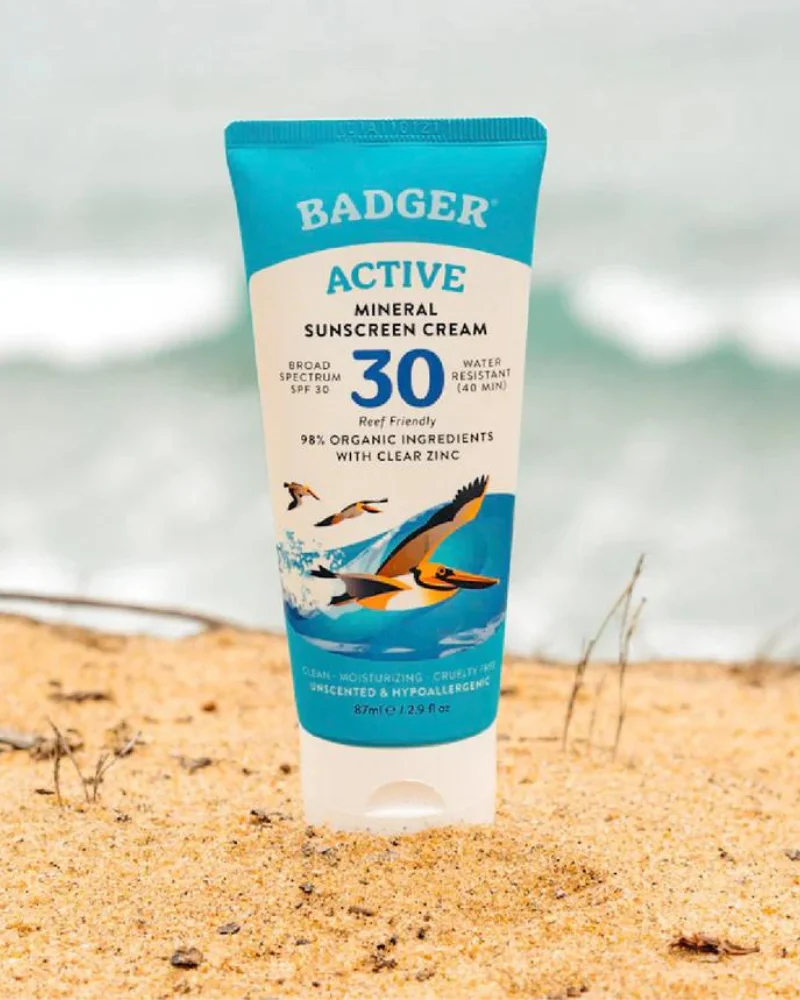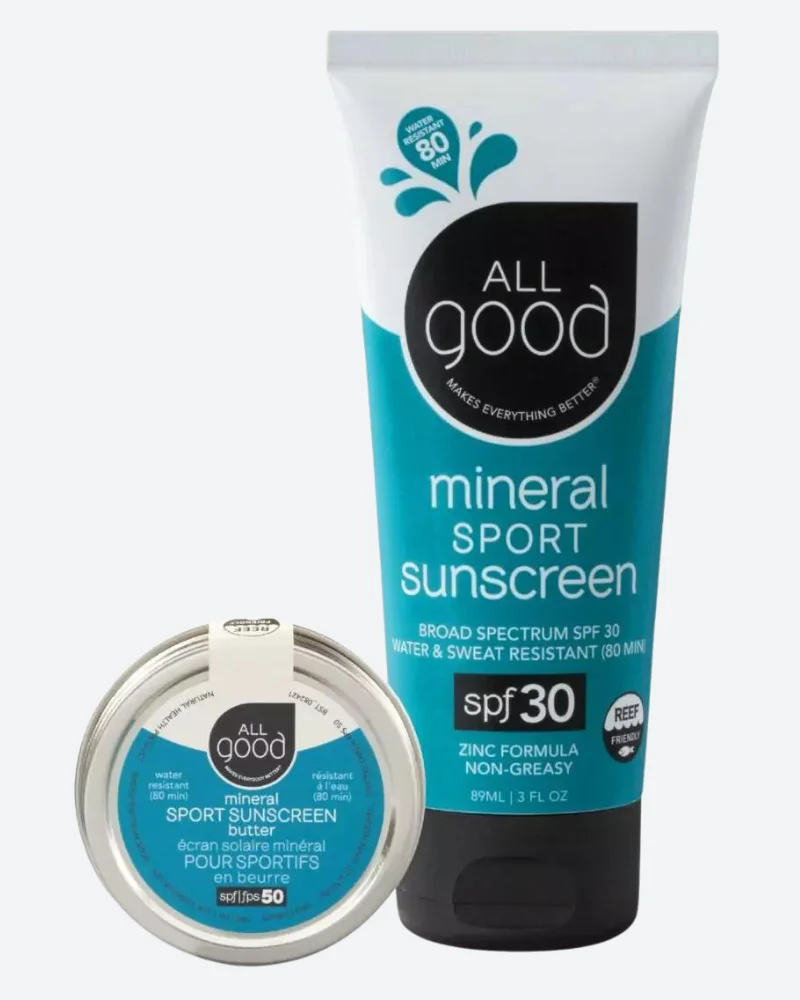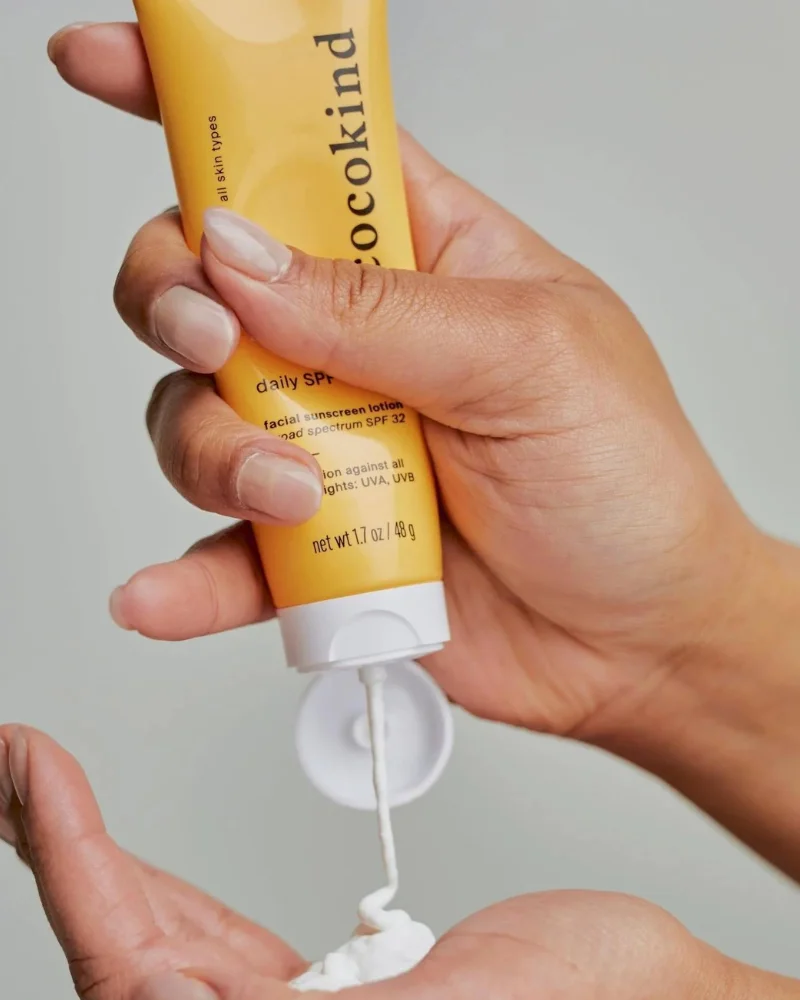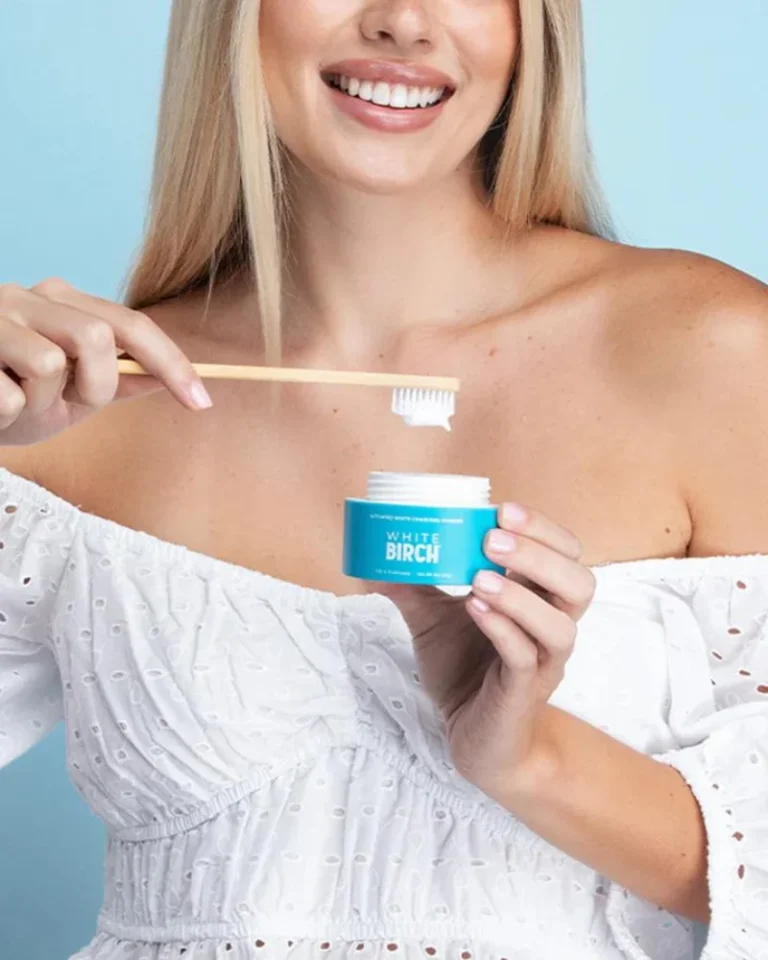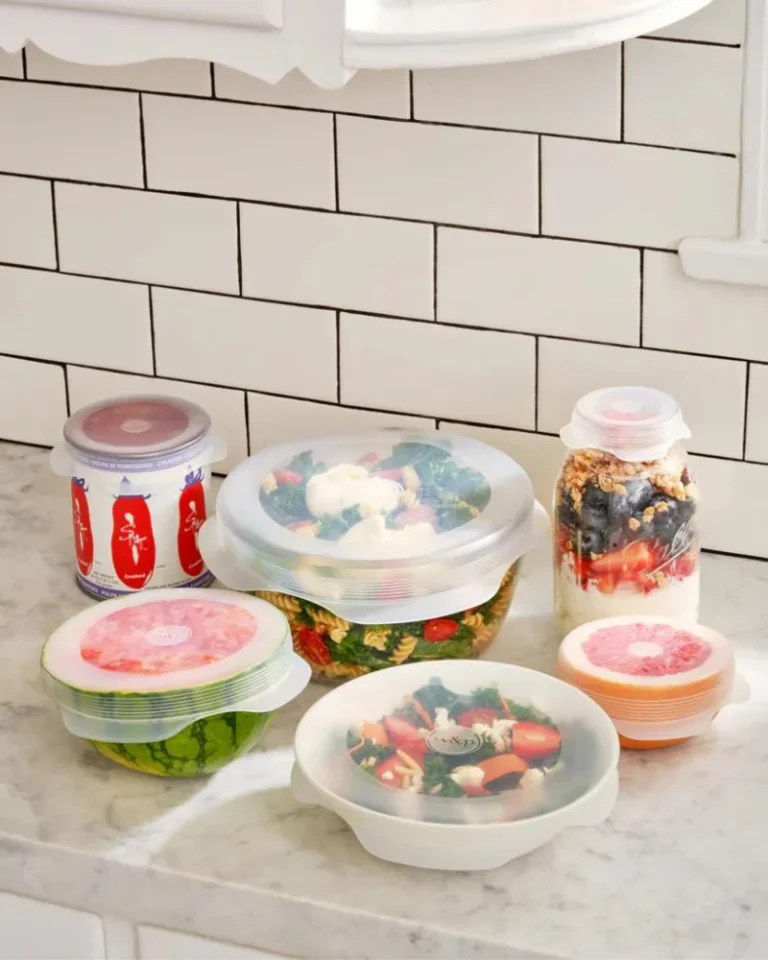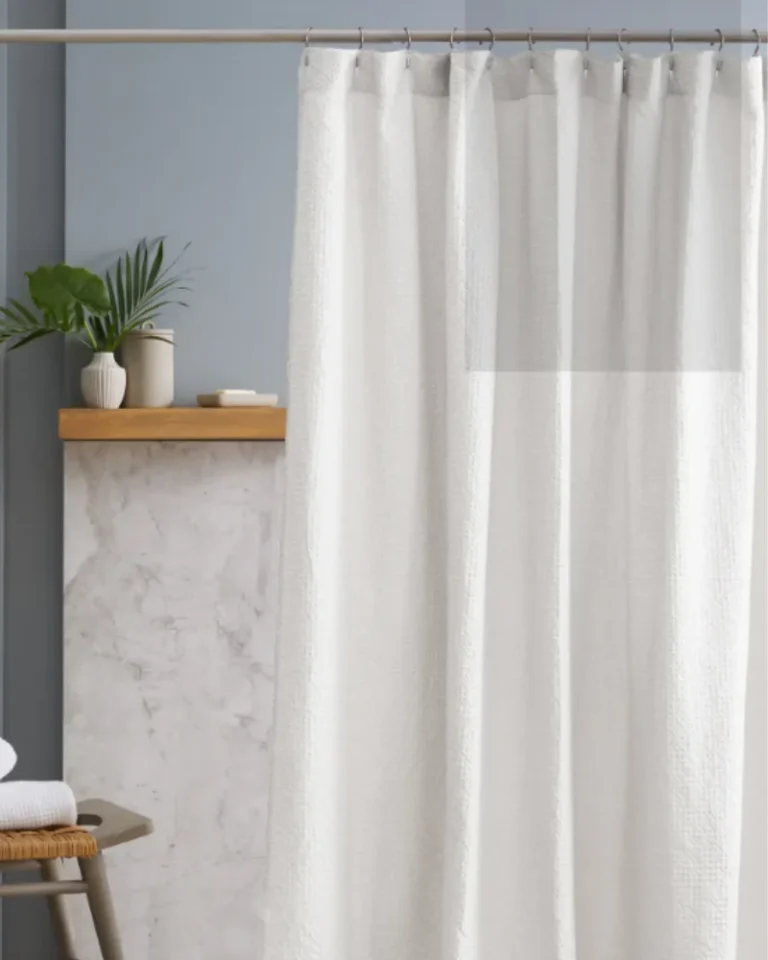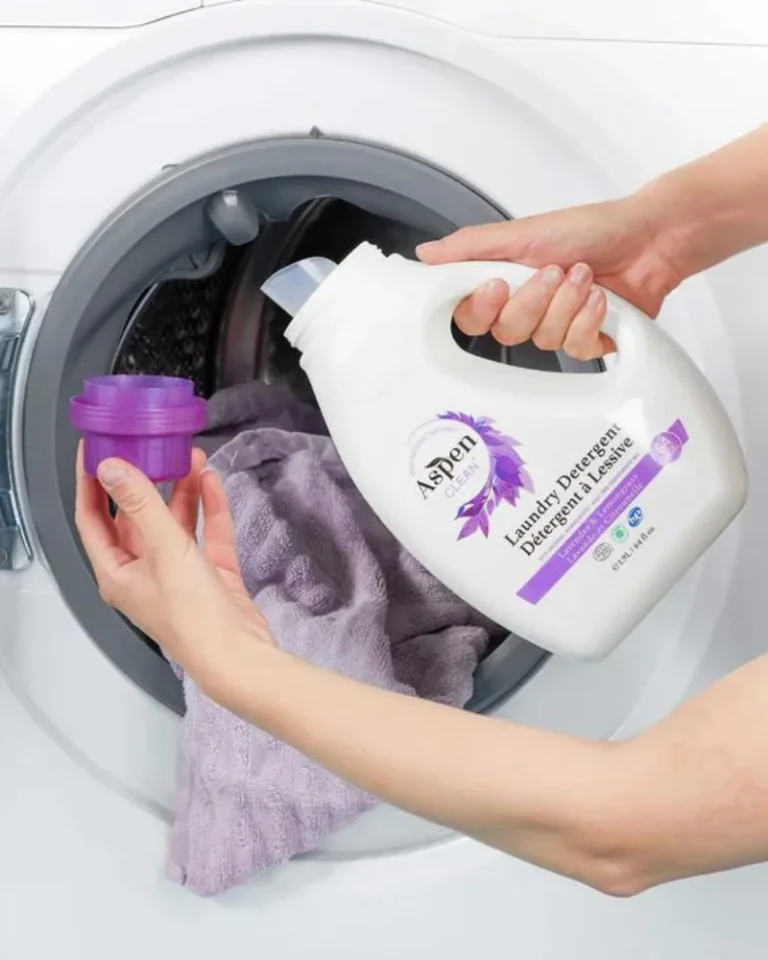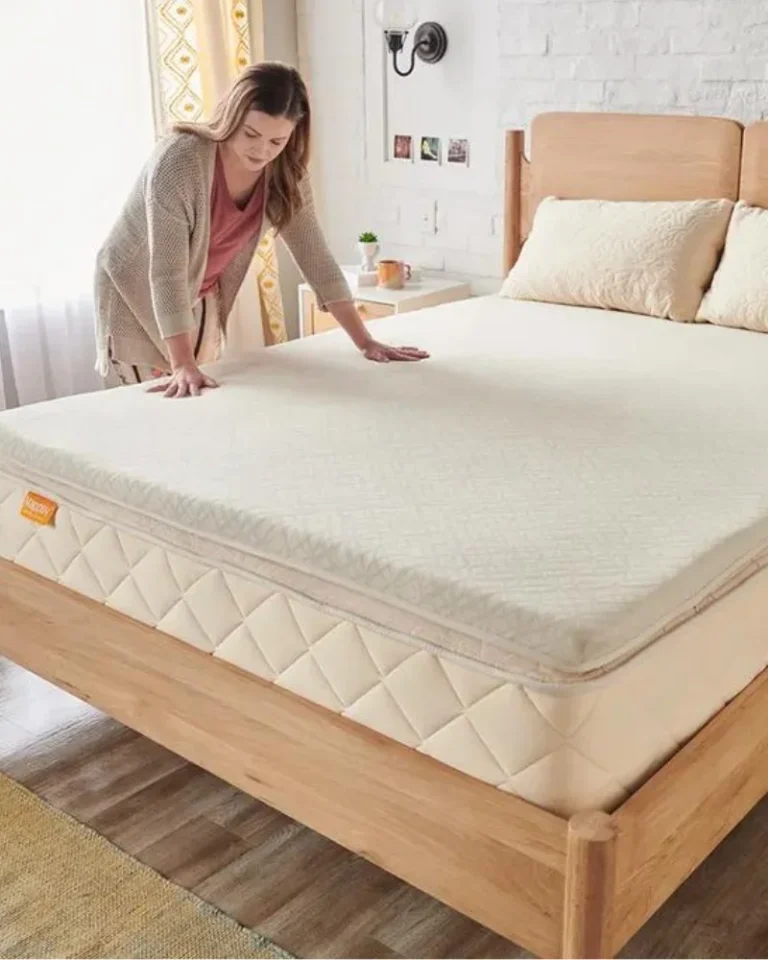This post may contain affiliate links. By browsing this website, you agree to our disclaimer, privacy policy, and terms of use.
Brace yourself, because we’re about to shine a light on some surprising truths about the sunscreen industry.
It turns out that many of the most popular brands in your local drugstore contain ingredients that could be doing more harm than good when it comes to your health. We’re talking about hormone disruptors, environmental pollutants, and even potential carcinogens.
But don’t worry, we’ve got your back (and your face, and your arms, and your legs!). The THC team has put on our detective hats to find the most toxic sunscreen brands to avoid plus the safest, most effective sunscreens to keep your skin protected and healthy!
Chemical sunscreens contain molecules that absorb UV radiation at specific wavelengths and convert it into heat. They tend to have a lighter feel and come in a wider variety of options (like sprays, sticks, and gels). They may also offer better water resistance compared to physical sunscreens.
Common chemical sunscreen ingredients include avobenzone, oxybenzone, octinoxate, octisalate, and homosalate.
However, chemical sunscreens and their ingredients have a few potential downsides to consider. Some of the chemicals used in these sunscreens at best may irritate sensitive skin. There are also growing concerns about our bodies absorbing these chemicals through our skin and causing serious long-term health issues.
These same ingredients are also partially responsible for harming marine life, particularly coral reefs. This is why you may be noticing a growing trend of “reef-safe” sunscreens on the market.
Physical sunscreens are more widely referred to as mineral sunscreens. They are called physical sunscreens because they contain ingredients like zinc oxide or titanium dioxide that physically block UV rays from reaching the skin.
They work by sitting on the surface of your skin and deflecting the rays away like a shield. While they can sometimes leave a white cast on the skin, newer formulations have found ways to get rid of this white cast almost completely.
Physical sunscreens are generally less irritating than chemical ones, making them a good choice if you have sensitive skin or conditions like eczema or rosacea.
They also start working immediately upon application and are more environmentally friendly, especially to marine life. However, they can feel thicker than chemical sunscreens and can be a little more difficult to rub in.
With so many sunscreen options out there, it can be tough to know which ones are chemical sunscreens versus physical (mineral) sunscreens, and which ones are truly safe and effective. But don’t stress! We’ve done all of the research for you to put together a list of the best ones out there.
The Worst Sunscreen Brands for 2024
In recent years, several popular sunscreen brands, including Neutrogena, Banana Boat, CVS Health, Coppertone, and more, have come under scrutiny for containing potentially harmful ingredients.
In 2021, Johnson & Johnson voluntarily recalled five Neutrogena and Aveeno sunscreen sprays due to the presence of benzene, a known carcinogen. This has raised concerns about the safety and regulation of many popular sunscreen brands.
When choosing a sunscreen, it’s essential to read the label carefully and look for products that prioritize safety and transparency when it comes to their ingredients.
Based on our research, here are some of the worst sunscreen brands to avoid:
1. Banana Boat
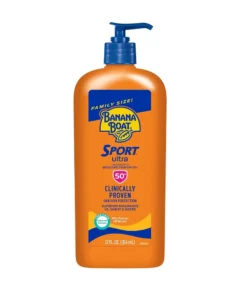
- Benzene: Banana Boat recently issued voluntary recalls for certain batches of their Hair & Scalp Sunscreen Spray SPF 30 due to unexpected levels of benzene, a known carcinogen linked to an increased risk of leukemia and other blood disorders.
- Potentially Harmful Ingredients: Many Banana Boat sunscreens contain Ingredients such as homosalate, octisalate, octocrylene, avobenzone, and isobutane, which can be readily absorbed by the skin and enter the bloodstream. These ingredients have been associated with skin allergies, endocrine disruption, and potential toxicity, making them questionable choices for sun protection.
- Lack of FDA Safety Data: Some of the chemical Ingredients used in Banana Boat sunscreens, such as avobenzone, octocrylene, and oxybenzone, have not been classified as safe and effective by the FDA due to insufficient health safety data. This lack of regulatory approval raises questions about the long-term safety of these ingredients.
- Problematic InIngredients: In addition to the Ingredients, Banana Boat sunscreens also include synthetic additives known to cause skin irritation and allergies, as well as chemical fragrances and other contaminants. These inIngredients can further compromise the safety and gentleness of the product.
2. Coppertone
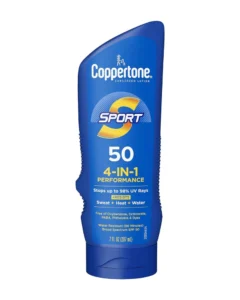
- Inhalation Risks (Spray Sunscreens): Coppertone’s spray sunscreens, such as the Sport Continuous Spray, pose a potential inhalation risk. Inhaling sunscreen particles can cause respiratory irritation and other health issues. Additionally, spray sunscreens may not provide complete and even coverage on the skin, leaving some areas more vulnerable to UV damage.
- Oxybenzone: Certain Coppertone products, like the Sport Sunscreen Lotion SPF 50 and Sport Sunscreen Continuous Spray SPF 30, contain oxybenzone. This endocrine-disrupting chemical has been linked to allergic skin reactions, breast cancer, hormonal disruption, abnormal birth patterns, and endometriosis.
- Other Harmful Ingredients: In addition to oxybenzone, Coppertone sunscreens may contain other potentially harmful ingredients such as avobenzone, octinoxate, homosalate, octisalate, and octocrylene. These ingredients are suspected hormone disruptors and allergens, which may cause adverse health effects, especially with repeated use.
- Contamination Concerns: Some Coppertone sunscreens may be contaminated with carcinogens like benzophenone. While not an intentional ingredient, the presence of such contaminants raises questions about the product’s purity and safety.
- Environmental Impact: Oxybenzone and other chemical sunscreen ingredients found in Coppertone products are known to be toxic to coral reefs. When these chemicals wash off the skin and enter marine environments, they can contribute to coral bleaching and harm delicate aquatic ecosystems.
3. CVS Health
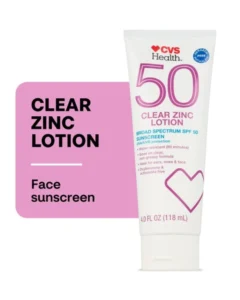
- Oxybenzone: Many CVS Health Brand sunscreens, particularly those with SPF values of 50 and above, contain oxybenzone. This endocrine disrupting chemical (EDC) has been linked to various health concerns, including allergic skin reactions, breast cancer, hormonal disruption, abnormal birth patterns, and endometriosis.
- Other Questionable Ingredients: In addition to oxybenzone, CVS sunscreens often contain other potentially harmful ingredients such as avobenzone, octinoxate, homosalate, octisalate, and octocrylene. These ingredients are suspected hormone disruptors and allergens, which may cause adverse health effects, especially with repeated use.
- Contamination Concerns: Some CVS sunscreens may be contaminated with carcinogens like benzophenone. While not an intentional ingredient, the presence of such contaminants raises questions about the product’s purity and safety. Benzophenone is classified by the International Agency for Research on Cancer (IARC) as “possibly carcinogenic to humans”
- Incomplete Phase-Out Plan: While CVS has announced plans to phase out oxybenzone and octinoxate from many of its store-brand sun-protection products by the end of 2020, these ingredients will remain in some higher SPF products. This means you should be vigilant in checking ingredient lists to avoid these harmful chemicals.
4. Equate
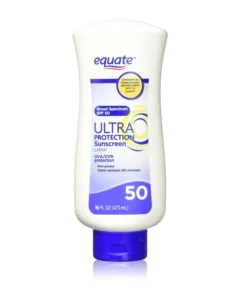
- Poor Safety Rating: The Environmental Working Group (EWG) listed Equate Beauty Ultra Light Sunscreen Lotion, SPF 100 as one of the worst offenders, giving it a score of 10 out of 10 for major safety concerns. This high-risk rating suggests that the product contains ingredients that may pose significant health risks.
- Potentially Harmful Chemical Ingredients: Equate sunscreens contain chemical Ingredients such as oxybenzone, octinoxate, homosalate, octocrylene, avobenzone, and octisalate. These chemicals can be absorbed through the skin and potentially disrupt hormones and cause skin allergies. Some of these ingredients, like oxybenzone, have been linked to coral reef damage and are banned in certain locations.
- Inadequate UV Protection: According to EWG’s modeling, the actual UV protection provided by Equate sunscreens may be significantly lower than the stated SPF values. This could lead to a false sense of security and inadequate sun protection, increasing the risk of sunburn and skin damage. SPF values above 50 may offer a false sense of security, as the additional protection is minimal compared to lower SPF products.
- Lack of FDA Safety Data: Some of the chemical Ingredients used in Equate sunscreens, such as avobenzone, homosalate, octisalate, octocrylene, and oxybenzone, have not been classified as safe and effective by the FDA due to insufficient health safety data. This lack of regulatory approval raises questions about the long-term safety of these ingredients.
5. Neutrogena
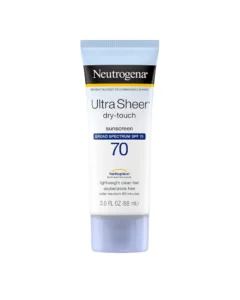
- Benzene Contamination: In 2022, the Valisure labs discovered benzene, a known carcinogen, in several Neutrogena spray sunscreens. This finding prompted Johnson & Johnson, Neutrogena’s parent company, to recall the affected products. The presence of cancer-causing contaminants raises serious safety concerns about the brand’s manufacturing processes and quality control.
- Retinyl Palmitate: Some Neutrogena sunscreens contain retinyl palmitate, a form of vitamin A that may accelerate the development of skin tumors and lesions when applied to the skin and exposed to sunlight.
- Oxybenzone Content: Many Neutrogena sunscreens contain oxybenzone, a hormone-disrupting chemical that can easily be absorbed through the skin. Oxybenzone has been linked to endocrine disruption, allergic skin reactions, lower testosterone levels in boys, and pregnancy issues.
- Misleading SPF Claims: The U.S. Food and Drug Administration (FDA) has debunked Neutrogena’s claims of SPF levels over 50, stating that SPF effectiveness maxes out at around 50.
- Other Questionable Ingredients: Neutrogena sunscreens often contain a variety of other potentially harmful ingredients, such as homosalate, octisalate, octocrylene, avobenzone, BHT, methylisothiazolinone, and polyaminopropyl biguanide.
6. Up & Up
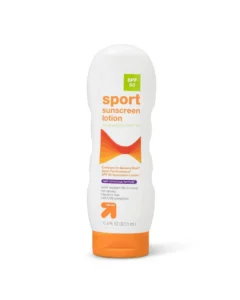
- Oxybenzone Content: Many Up & Up sunscreens contain oxybenzone, a hormone-disrupting chemical that can easily be absorbed through the skin.
- Insufficient Safety Data: Up & Up sunscreens often contain avobenzone, homosalate, octocrylene, and other chemical Ingredients that the FDA has not classified as safe and effective due to a lack of sufficient health safety data.
- Multiple Health Concerns: The ingredients found in Up & Up sunscreens raise a variety of health concerns, including allergies and immunotoxicity, enhanced skin absorption, endocrine disruption, non-reproductive organ system toxicity, and irritation.
- Lower UV Protection: According to EWG’s estimate, the actual UV protection provided by Up & Up sunscreens may be significantly lower than the advertised SPF value. This discrepancy could lead to inadequate sun protection and increased risk of skin damage and sunburn.
- Other Questionable Ingredients: In addition to the main concerns, Up & Up sunscreens contain a variety of other potentially harmful ingredients, such as polyglyceryl-3 stearate/isostearate/dimer dilinoleate crosspolymer, phenoxyethanol, propylene glycol, and hydroxyacetophenone. These ingredients may have adverse effects on health and skin.
7. L’Oreal
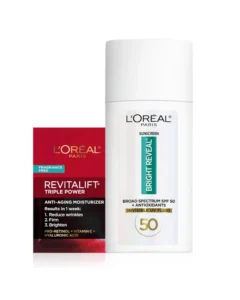
- Octocrylene and Benzophenone: L’Oreal brands like Vichy and La Roche-Posay use octocrylene, a common sunscreen filter that can break down into benzophenone when exposed to heat and light. Benzophenone is a mutagen, carcinogen, and endocrine disruptor that is banned in food products in the US. Sunscreens containing octocrylene were found to have high levels of benzophenone contamination, with concentrations more than doubling after exposure to heat and light.
- Lack of Safety Data: The FDA has proposed that octocrylene and over a dozen other common sunscreen chemicals, including oxybenzone, lack sufficient safety data and should not be considered generally recognized as safe and effective. This raises concerns about the long-term health effects of these ingredients.
- Oxybenzone and Hormone Disruption: Some L’Oreal sunscreens contain oxybenzone, a controversial sunscreen filter that is readily absorbed through the skin. Oxybenzone has been linked to hormone disruption, particularly in children, and may increase the risk of breast cancer and endometriosis.
- Lack of Transparency: L’Oreal’s use of questionable chemical filters and the lack of clear safety data suggests a lack of transparency regarding the potential health and environmental risks associated with their sunscreen products.
The Best Sunscreen Brands for 2024
With Beauty by Earth’s non-toxic sunscreen, you can enjoy the sun without worrying about harmful chemicals or damage to the environment.
Their sunscreens are filled with natural ingredients like coconut oil, aloe vera, and shea butter, to moisturize and soothe your skin while protecting it from the sun.
We love that Beauty by Earth’s sunscreen uses clear non-nano zinc oxide, which means you won’t be left with a white cast on your skin like some other mineral sunscreens.
All of Beauty by Earth’s sunscreens are free of all the nasty stuff you don’t want on your skin, like parabens, oxybenzone, nanoparticles, chemical fragrances, silicones, phthalates, and retinyl palmitate.
Plus, their products are packaged in 100% recyclable plastic and are reef-safe.
Price
$18 – $55
Notable Features
USDA Certified Organic, Leaping Bunny Certified, Reef-Safe
ingredients
Zinc Oxide (Non-Nano Uncoated) 14%, Organic Aloe Juice, Organic Coconut Oil, Organic Shea Butter, Vegetable Glycerin, Sorbitan Sesquioleate, Castor Oil, Organic Sunflower Oil, Organic Beeswax, Organic Pomegranate Extract, Polyhydroxystearic Acid, Organic Cucumber Extract, Organic Calendula Extract, Organic Vanilla Extract, Organic Green Tea Leaf Extract, Rosmarinus Extract, Magnesium Sulfate, Vitamin E, Coconut Pulp Extract, Vanilla Fruit Extract,
Earth Mama’s dedication to quality and safety is evident in all of their hard-earned eco-certifications.
Their line of sunscreens is proudly certified by the USDA and NSF/ANSI 305, NON-GMO project verified, and is EWG Verified. It has even earned the prestigious Seal of Acceptance from the National Eczema Association.
Their tried and tested reef-friendly formula offers exceptional UVA and UVB protection (SPF 40) while nourishing even the most sensitive skin.
Free from harmful chemical sunscreens, artificial fragrances, and dimethicone, their sunscreens are packed with skin-loving antioxidants and hydrating vitamins C and E.
Soothing organic shea butter and colloidal make their sunscreens especially great for anyone who suffers with eczema or dry, sensitive skin.
Earth Mama’s sunscreens are pediatrician and dermatologist-tested, and even clinically tested to ensure their sunscreens won’t cause irritation no matter what your skin type is.
Price
$9.99 – $32.98
Notable Features
USDA Certified Organic, NSF/ANSI 305, NON-GMO Project Verified, EWG Verified, Seal of Acceptance™ from the National Eczema Association
ingredients
Zinc Oxide 25%, Caprylic/Capric Triglyceride, Coconut Oil, Olive Oil, Beeswax, Raspberry Seed Oil, Pomegranate Seed Oil, Jojoba Oil, Shea Butter, Tocopherol, Argan Oil, Calendula Flower Extract, Iron Oxides, Mica, Beta-Sitosterol, Squalene
Suntegrity has got you covered (literally) with their range of non-toxic sunscreen options, including sprays, classic mineral-based formulas, and even tinted sunscreens for all skin types.
But here’s the best part: Suntegrity is vegan, cruelty-free, and reef-friendly, so you can feel good about slathering it on before jumping in the waves.
With a solid broad spectrum SPF 50 (with 40 minutes of water resistance!), Suntegrity uses non-nano zinc oxide and titanium dioxide to shield your skin from both UVA and UVB rays.
And don’t worry about looking like a ghost. Their nutrient-dense, milky formula is lightweight, non-sticky, and absorbs effortlessly into your skin.
But don’t just take our word for it. Suntegrity has the stamp of approval from the Good Face Project and even earned a spot in EWG’s Best Daily-Use SPF category in 2022.
Price
$12 – $50
certifications
PETA Certified, Leaping Bunny Certified, Reef Friendly, EWG Verified, Good Face Project Approved, USDA Certified Biobased Product
ingredients
Aloe Leaf Juice, Capric/Caprylic Triglyceride, Water, Castor Oil, Sorbitan Sesquioleate, Magnesium Sulfate, Polyglyceryl-10 Laurate, Jojoba Seed Oil, Sunflower Seed Oil, Cucumber Extract*, Astaxanthin, Hyaluronic Acid+, Red Algea Extract, Green Tea Extract, Pomegranate Seed Oil, Dimethicone, Sweet Orange EO, Tangerine EO, Polyaminopropyl Biguanide (less than 0.1% per EU restrictions), Ethylhexylglycerin.
Designed by dermatologists who know a thing or two about sun protection, Blue Lizard’s Mineral Sensitive sunscreen is the ultimate head-to-toe defender against those pesky UV rays.
With powerful zinc oxide based SPF formulas you can trust that 97% of the sun’s burning rays won’t stand a chance.
Blue Lizard sunscreens are free from skin-irritating chemicals like parabens and fragrances.
Their sunscreens are an excellent choice for even those with the most delicate skin. Most formulas are water-resistant, so you can splash around in the ocean or pool without worrying about your sunscreen washing away.
And speaking of the ocean, Blue Lizard is all about protecting our underwater friends, too. Their reef-safe formula is made without oxybenzone or octinoxate, helping to preserve our fragile reef ecosystems.
Price
$8.99 – $29.99
Notable Features
Reef Safe
ingredients
Zinc Oxide 20%, Aloe Barbadensis Leaf Extract, Shea Butter, Caprylic/Capric Triglyceride, Coconut Oil, CandelilaWax, Sunflower Seed Oil, Sunflower Seed Wax, Polyhydroxystearic Acid, Castor Seed Oil, Jojoba Seed Oil, Squalane, Cocoa Seed Butter, Tocopherol
Raw Elements offers a range of mineral sunscreens that provide effective, broad-spectrum protection against both UVA and UVB rays.
Their sunscreen formulas deliver reliable sun defense in moisturizing, gentle formulas suitable for all ages and skin types.
If you’re a water sports lover, you’re going to love Raw Elements. Its water-resistant up to 80 minutes of swimming or sweating. There sunscreens are also great if you love to cycle, run, or workout outdoors.
Raw Elements uses the best high-quality, botanical ingredients like antioxidants, vitamins, minerals, and extracts that nourish and protect the skin even after sun exposure.
They offer a variety of formulations to suit different preferences including creams, tins, tubs, and tinted formulas.
Price
$4.99 – $46.97
Notable Features
Leaping Bunny Certified Cruelty-Free, Reef Safe, EWG Rated
ingredients
Non-Nano Zinc Oxide 20%, Water, Sunflower Seed Oil, Argan Oil, Brassica Oil Copolymer, Glycerin, Cetyl Alcohol, Stearic Acid, Glyceryl Stearate, PEG-100 Stearate, Green Tea Leaf Extract, Tocopheryl Acetate, Ascorbic Acid, Retinyl Palmitate, Aloe Barbadensis Leaf Juice, Chamomilla Flower Extract, Calendula Flower Extract, Symphytum Leaf Extract, Caprylhydroxamic Acid, Caprylyl Glycol
Babo Botanicals is all about harnessing the goodness of nature to create products that are safe, effective, and eco-friendly.
They source their ingredients from farms and greenhouses around the world, carefully selecting ingredients that are backed by scientific evidence and grown using sustainable agricultural methods.
Users love their clear zinc SPF 30 fragrance-free sunscreen. You can use this non-toxic sunscreen on both your face and body. Not only is it water and sweat-resistant for up to 80 minutes, it’s also safe for super-sensitive skin.
So, whether you’re hitting the beach, going for a hike, or just running errands around town, their non-toxic, botanically-based sunscreens are a great choice for anyone who wants to protect their skin and the environment at the same time.
Price
from $15.70
Notable Features
USDA Certified Organic, MadeSafe Certified, B Corp Certified
ingredients
Zinc Oxide 19.7%, Rice Bran Oil, Avocado Oil, Candelilla Wax, Octyldodecyl Oleate, Jojoba Seed Oil, Beeswax, Cocoa Seed Butter, Oryzanol, Shea Butter, Vitamin E, Bisabolol, Sunflower Seed Oil, Calendula Extract, Chamomille Extract, Watercress Extract, Rosemary Extract, Turmeric Extract, Aloe Extract, Camellia Extract, Glycerin, Caprylic/Capric Triglyceride, Vegetable Oil, Castor Oil, Polyhydroxystearic Acid, Alumina, Triethoxycaprylylsilane
Looking for a sunscreen that’s easy to apply, gentle on your skin, and eco-friendly?
Thinksport’s All Sheer Mineral Spray was made for you active, on-the-go types who love being outdoors, but don’t want to think about reapplying sunscreen all of the time.
Thinksport’s broad-spectrum coverage protects against both UVA and UVB rays and is water resistant for up to 80 minutes.
They use an air-powered spray (not aerosol) to deliver a sheer, non-greasy formula that absorbs quickly and leaves no white cast. It’s like you’re not even wearing sunscreen. Until you realize you’ve spent hours in the sun without burning.
What sets Thinksport apart is its commitment to using safe, non-toxic ingredients. This mineral spray is reef-safe and free of PABA, parabens, oxybenzone, and other questionable chemicals.
Thinksport also offers a great range of sunscreen lotions and sticks if you’re not a fan of using spray sunscreen.
Price
$8.49 – $24.99
Notable Features
Cradle to Cradle Certified, EWG Verified, Leaping Bunny Certified
ingredients
Zinc Oxide 23.4% (Non-nano), Purified Water, Aloe Leaf Juice, Capric Caprylic Triglycerides, Sorbitan Stearate (Coconut Based), Vegetable Glycerin, Cetyl Dimethicone, Hydrogenated Castor Oil, Magnesium Sulfate, Sunflower Oil, Jojoba Oil, Vitamin E, Olive Oil, Raspberry Seed Oil, Cranberry Seed Oil, Hyaluronic Acid, Grapefruit Extract, Iron Oxides
The lightweight, waterless formula of Badger Balm’s Daily Mineral Sunscreen – SPF 30 is the perfect sunscreen for everyday wear.
With SPF 30 broad-spectrum protection and ultra-sheer zinc oxide, you can trust that your skin is shielded from the sun’s harmful rays without leaving you looking like a ghost.
The non-greasy formula blends effortlessly, leaving a natural, silky finish that sits well under makeup.
And with 40 minutes of water resistance, you can enjoy your favorite outdoor activities without worrying about your sunscreen melting off.
Incredibly, this sunscreen only contains 7 simple ingredients (90% of which are organic). It’s completely free of harmful chemicals and is reef-safe.
Plus, it’s vegan, cruelty-free, and packaged in a 50% post consumer recycled plastic tube.
Price
$4.49 – $23.99
Notable Features
Protect Land + Sea Certified, Leaping Bunny Certified, EWG Verified, Cradle to Cradle Certified
ingredients
Zinc Oxide (22.5%), Sunflower Seed Oil*, Beeswax*, Polyglyceryl-3 Diisostearate, Polyhydroxystearic Acid, Tocopherol, Helianthus Annuus (Sunflower) Seed Wax, Glycerin, Galactoarabinan
All Good’s non-toxic sunscreens are a must-try. With just 7 ingredients, these powerful formulas prove that less can be more when it comes to sun protection.
Their reef-friendly formula that’s free of oxybenzone and octinoxate is packed with good-for-you ingredients.
Organic aloe, calendula, coconut oil, and jojoba oil work together to protect and hydrate your skin. All of these ingredients are great for those with particularly sensitive skin as well.
All Good’s sunscreens offer strong protection, blocking 97% of UVB rays.
They’re also water-resistant for up to 40 minutes, so you can enjoy your favorite beach activities without worrying about your sunscreen washing off.
Price
$4.00 – $49.00
Notable Features
Oregon Tilth Certified Organic, Leaping Bunny Certified
ingredients
Zinc Oxide 16% (Non-nanoparticle), Aloe Barbadensis (Aloe) Leaf Juice, Arachidyl Alcohol, Arachidyl Glucoside, Behenyl Alcohol, Bisabolol, Butyloctyl Salicylate, Butyrospermum Parkii (Shea Butter), Calendula Officinalis (Calendula) Flower, Camellia Sinensis (Green Tea) Leaf Extract, Caprylhydroxamic Acid, Capryloyl Glycerin/Sebacic Acid Copolymer, Caprylyl Glycol, Cellulose Gum, Cetearyl Alcohol, Cetyl Alcohol, Citric Acid, Coco-Glucoside, Cocos Nucifera (Coconut) Oil, Diheptyl Succinate, Glycerin, Helianthus Annuus (Sunflower) Seed Oil, Mauritia Flexuosa (Buriti) Fruit Oil, Microcrystalline Cellulose, Olea Europaea (Olive) Fruit Oil, Polyhydroxystearic Acid, Rosa Canina (Rose Hip) Seed Extract, Rubus Idaeus (Raspberry) Seed Oil, Sodium Gluconate, Sodium Hyaluronate, Sodium Stearoyl Glutamate, Theobroma Cacao (Cocoa) Seed Butter, Tocopherol, Water.
*Certified Organic Ingredients
Cocokind’s mineral-based sunscreen formulas harnesses the power of non-nano zinc oxide (21%), blue phytoplankton, and microalgae to shield your skin from the sun’s harmful rays and the effects of urban living.
The lightweight, non-greasy texture blends seamlessly into the skin, leaving a natural, dewy finish that works beautifully under makeup.
Blue phytoplankton spirulina maxima extract contains phycocyanin, a potent antioxidant that defends against oxidative stress and boosts radiance.
Microalga phaeodactylum tricornutum extract fortifies the skin barrier by promoting filaggrin production, a key structural protein, while also shielding skin from urban pollution and dust.
Rice starch helps absorb excess sebum, leaving your skin soft and comfortable without any stickiness.
Not only is this sunscreen effective and gentle, but it’s also eco-friendly. The tube packaging is made from 40% sugarcane-derived LPDE and 60% sugarcane-derived HDPE, reducing its environmental impact.
Price
$16.00 – $25.00
Notable Features
USDA Certified Organic, Certified Cruelty Free
ingredients
21% Non-Nano Zinc Oxide, Water/Aqua, Caprylic/Capric Triglyceride, Coconut Alkanes, Cetearyl Alcohol, Glycerin, Aloe Barbadensis Leaf Juice, Argania Spinosa Kernel Oil, Tocopheryl Acetate, Helianthus Annuus (Sunflower) Seed Oil, Coco-Glucoside, Glyceryl Caprylate, Sodium Phytate, Caprylyl/Capryl Glucoside, Xanthan Gum, Dipotassium Glycyrrhizate, Sclerotium Gum, Cetearyl Glucoside, Butyrospermum Parkii (Shea) Butter, Tocopherol, Coco-Caprylate/Caprate, Caprylhydroxamic Acid, Sucrose, Spirulina Maxima Extract, Phaeodactylum Tricornutum Extract, Oryza Sativa Starch, Bisabolol, Lecithin, Polyhydroxystearic Acid, Polyglyceryl-3 Polyricinoleate, Isostearic Acid, Glucose, C8 Alcohol, C10 Alcohol
This was the best and worst sunscreen brands of 2024.
Remember, when it comes to picking the perfect sunscreen, it’s all about reading labels, avoiding harmful ingredients, and finding a formula that works for your unique skin type.
And if you’re ever in doubt, just refer back to our handy list of the best sunscreens for 2024.
But sunscreen is just one piece of the sun safety puzzle. Don’t forget to wear protective clothing, seek shade during peak hours, and listen to your skin when it’s had enough vitamin D for the day.
There’s no reason to avoid the sun this summer, just do it safely! Slather on that SPF, rock that wide-brimmed hat, and don’t forget to reapply every two hours. Your skin will thank you, and you’ll be able to enjoy all the outdoor adventures your heart desires without worrying about unwanted sunburns.
